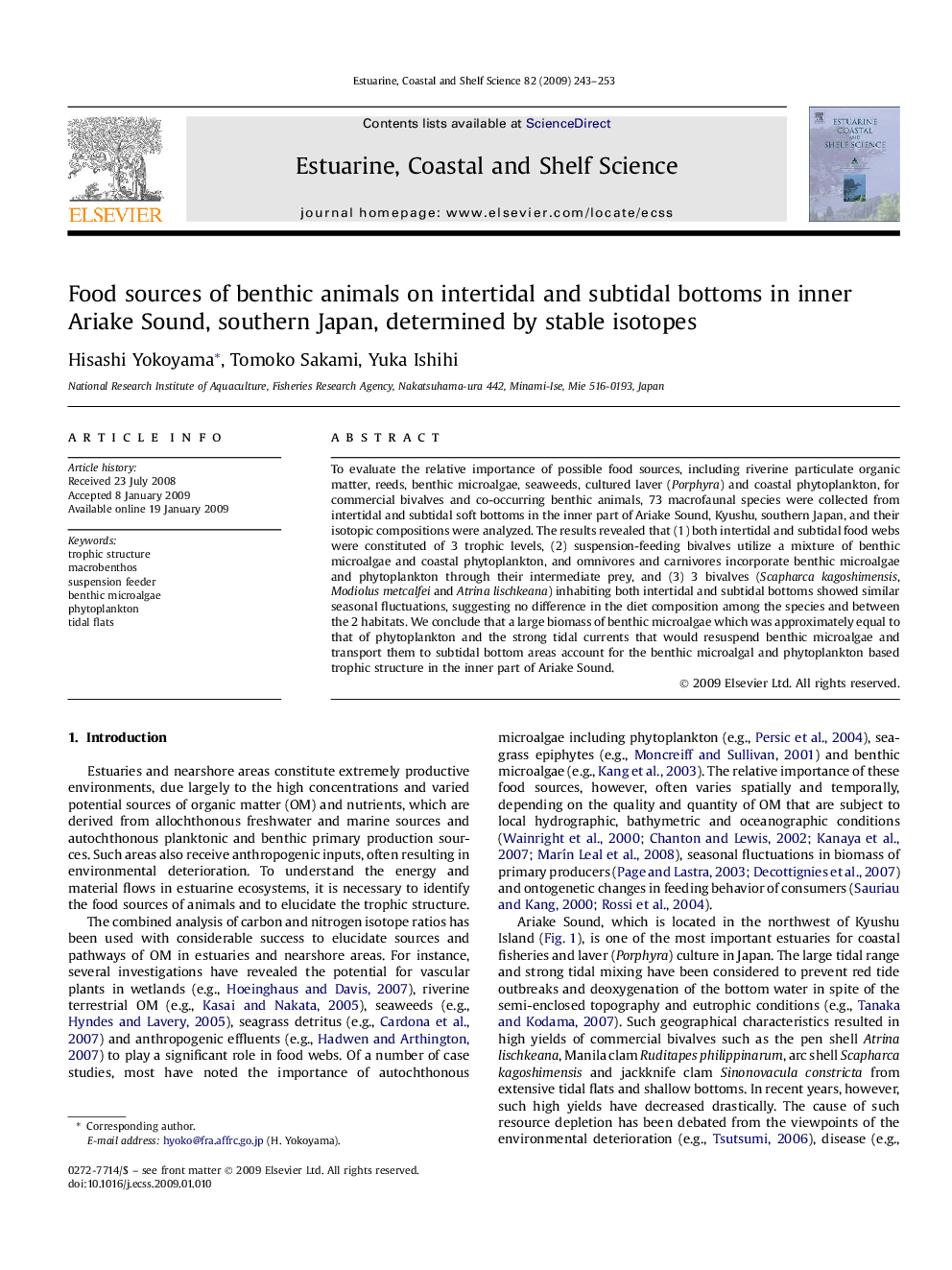| Article ID | Journal | Published Year | Pages | File Type |
|---|---|---|---|---|
| 4541234 | Estuarine, Coastal and Shelf Science | 2009 | 11 Pages |
To evaluate the relative importance of possible food sources, including riverine particulate organic matter, reeds, benthic microalgae, seaweeds, cultured laver (Porphyra) and coastal phytoplankton, for commercial bivalves and co-occurring benthic animals, 73 macrofaunal species were collected from intertidal and subtidal soft bottoms in the inner part of Ariake Sound, Kyushu, southern Japan, and their isotopic compositions were analyzed. The results revealed that (1) both intertidal and subtidal food webs were constituted of 3 trophic levels, (2) suspension-feeding bivalves utilize a mixture of benthic microalgae and coastal phytoplankton, and omnivores and carnivores incorporate benthic microalgae and phytoplankton through their intermediate prey, and (3) 3 bivalves (Scapharca kagoshimensis, Modiolus metcalfei and Atrina lischkeana) inhabiting both intertidal and subtidal bottoms showed similar seasonal fluctuations, suggesting no difference in the diet composition among the species and between the 2 habitats. We conclude that a large biomass of benthic microalgae which was approximately equal to that of phytoplankton and the strong tidal currents that would resuspend benthic microalgae and transport them to subtidal bottom areas account for the benthic microalgal and phytoplankton based trophic structure in the inner part of Ariake Sound.
